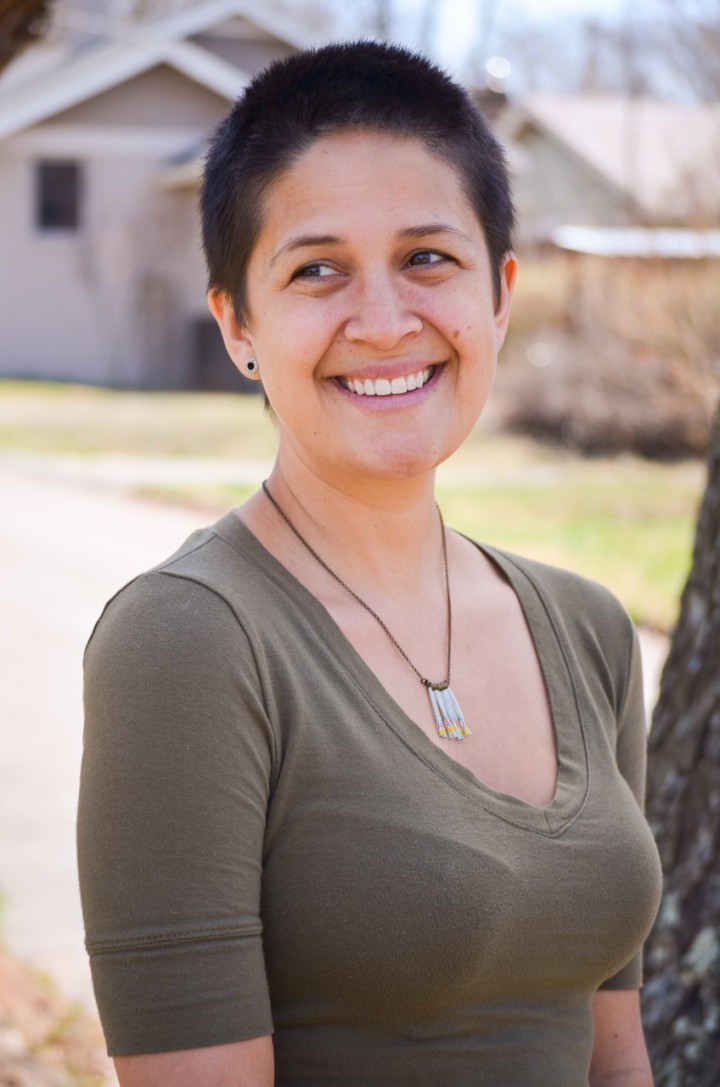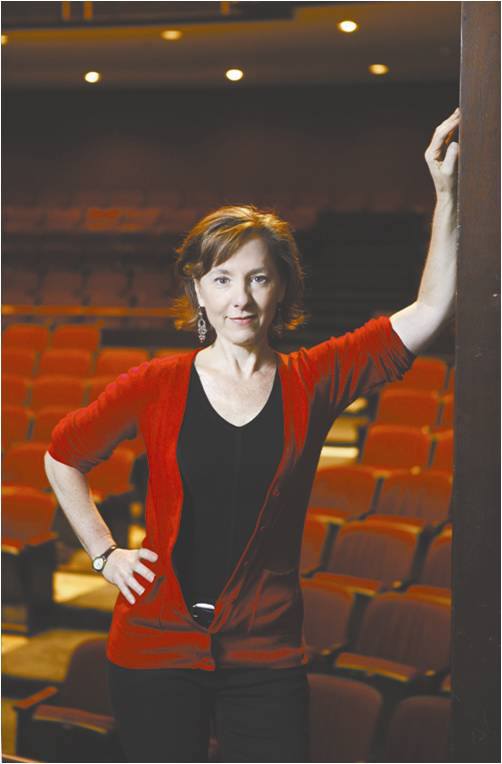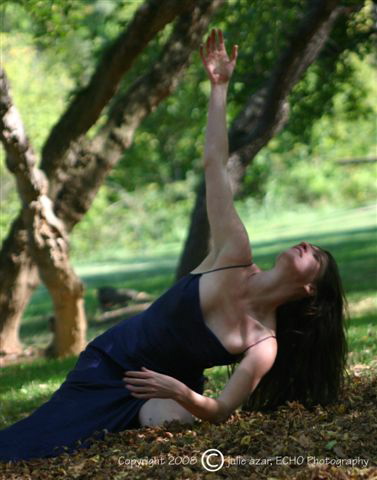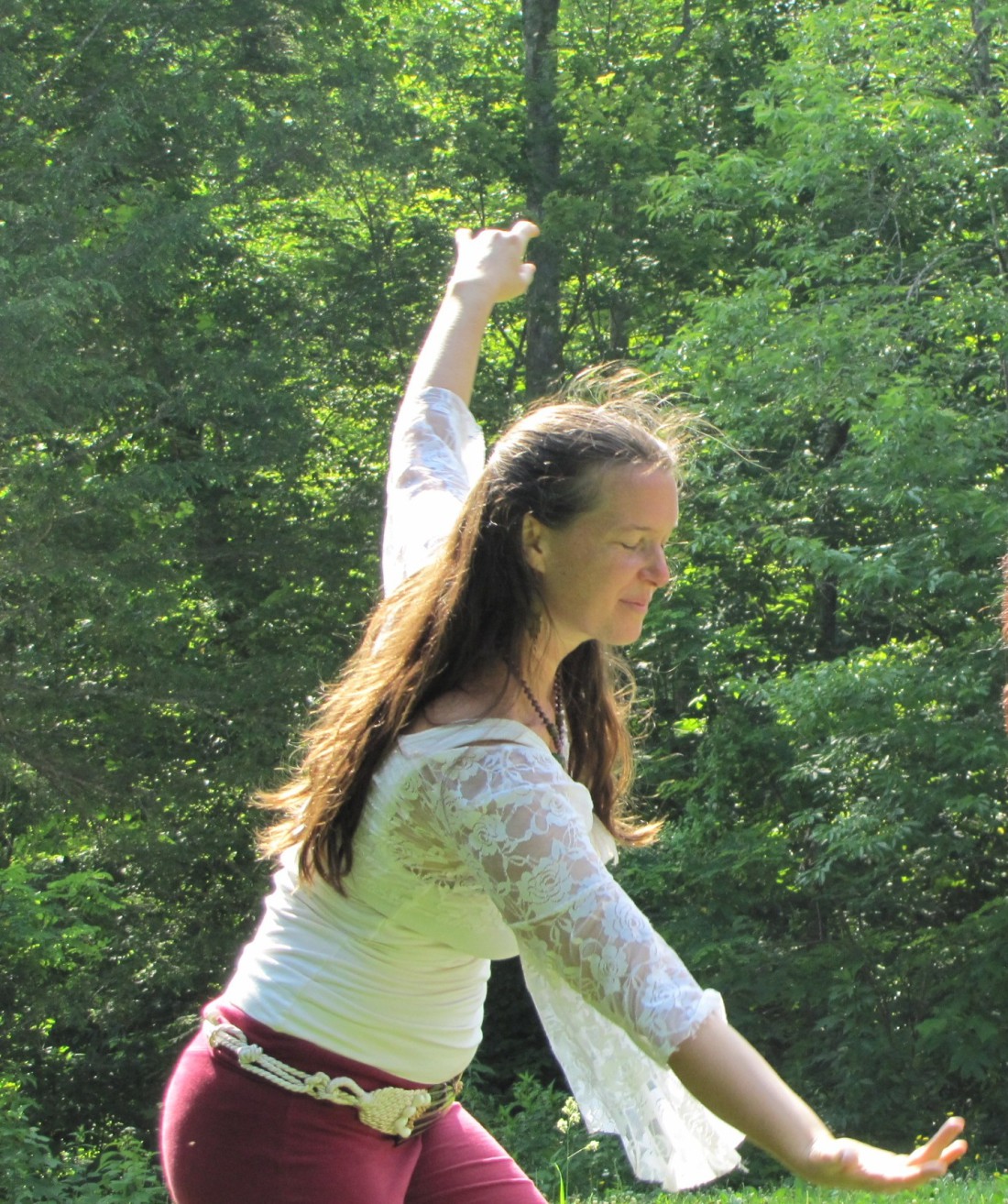“Engaging the body in some way is an essential part of healing,” says Shari Azar.
She’s one of several Asheville-based dance and movement specialists who say that moving our bodies in mindful ways can facilitate emotional and physical healing.
“If you consider [that] we are dynamic moving beings, that we’re made up of cells that move and breathe and that we are a high percentage of water, everything about us is motion,” says Azar, a somatic experiencing practitioner, movement artist and educator. “When we fall into patterns of stuckness or disease, where we don’t feel aligned or well in our lives, [dance] engages the brain and the body in a way that it is not habituated to, [which allows] things to come to the surface, to be witnessed and seen and expressed.”
Andrea Olson, a movement-based expressive therapy practitioner, finds that pairing movement with the arts, such as drawing and poetry, can help “the unconscious come to the surface.” This can be very powerful for healing, she says.
“We’re working directly with the root of our problem with the same language the unconscious speaks, which is the arts.”
Olson’s master’s thesis involved working with domestic violence perpetrators. “Bringing [them] into their bodies, using a connection with the breath and improvising movement based on the drawings they each made was amazing,” she says. Using the arts and movement is a gentle, noninvasive, nonthreatening way to help people work through difficult issues, says Olson.

“Once you get into the body everything that is stored there can heal itself,” she says.
Group-oriented movement and dances offer another approach.
“The combination of movement, story and music creates a kind of gestalt of the thing, or the collectiveness of it all that touches and opens,” says Community Choreography founder and artistic director Barrie Barton, who has 30 years of experience as a dancer, dance educator, director and choreographer.
Community Choreography stages movement theater presentations that are written and performed by nonprofessional dancers. Participants develop the show while attending a nine-week workshop led by Barton. A recent participant, she says, decided to contribute a story she had never publicly spoken of before. “When she first shared it with our [workshop] group, it was … a powerful moment in her healing. And then to share it again with 150 people in the audience was the next level,” says Barton.
“There is something about speaking [what] we carry inside of us and having it heard, having it witnessed and having it received with the compassion that I believe the audiences that come to these performances bring; those things can be transforming,” she says.

Each performance is focused on a particular theme; last year’s was called “Secrets: Freeing the Hidden Story,” and the latest one is “Talking to God,” Barton says.
For those interested in unchoreographed, free-form movement, Asheville Movement Collective hosts a number of dances each week. “It’s really an invitation to explore yourself and explore your body. People are invited to do what comes intuitively to them,” says Greg Bonin, executive director.
“People come to [each dance] for all different reasons,” he says. “Some people treat it as tribal community connection. Some people treat it as literal physical therapy, because maybe they have trouble with movement due to a past injury or current illness. This is an arena for them to move as much as they can without judgment. Some people treat it as spiritual practice,” he says.
Bonin was dealing with a lot of grief when he first began. “What dancing allowed me to do was to explore that grief in a safe place, where I could have an emotional expression that was attached to physical expression. It really helped me to literally move through my grief,” he says.
Steven Jones, events coordinator for the Asheville Dance Collective and a geriatric social worker, says that although he doesn’t separate physical and spiritual aspects of a person, he’s especially aware of the need to address physical health when working with older residents. After researching the health benefits of dancing, Jones began to host free-form dances at the Deerfield Episcopal Retirement of Community, where he works.
He rattles off a long list of benefits to be gained from free-form dance, including improvement in left- and right-brain connection, balance and agility, and, most importantly, increased blood flow and oxygen to the brain. “Any physician worth their true salt will tell you the only thing there is real evidence for in helping to slow down or possibly even stopping dementia and cognitive loss is cardiovascular exercise,” Jones says.
“So you’re helping physiologically with the brain, and of course, hopefully … having fun,” Jones says, laughing. “One of my most regular [clients] — (she’s sort of my mascot) — is 92 years old, and she’s in there really working the African rhythms. It’s amazing,” he says.
Belly dancing was originally a healing art, says Michelle Dionne. She teaches sacred dance, birth dancing and rites of passage for young people and notes that belly dancing was created by women to help with birthing. “That was the original intention,” says Dionne. “The movements help women to open up, by helping the hips … and sacrum to open up so the baby can come out easier,” she says.
The movements can also help a woman stay in her body during childbirth so she’s more in tune with what’s going on, she adds. And belly dancing can speed up labor: Some of the movements mimic birth contractions; when performed during the birth, those movements can help bring on the next contraction, she notes.
Dionne speaks from personal experience. She birthed her first child in 2 ½ hours and her second in only 90 minutes.
Cave paintings date belly dancing back 30,000 years, she says. “It has been passed down because it really works,” Dionne says.

Dance and movement mimic life, Azar adds. Just moving in any way, if it is done “with a level of presence and soulfulness, also begins to move the heart and the spirit and the soul,” she says.
The body is the gateway, says Olson, echoing the sentiment. “With movement therapy you start with your body, and it’s usually more honest. There are less barriers to getting to … the root of the issue, and I find it to be much more rapid healing.”
More Info
Shari Azar
studioofthemovingarts .com
Andrea Olson
soulistichealing.org
Greg Bonin
ashevillemovementcollective.org
Steven Jones
sjones@deerfieldwnc.org
Barrie Barton
communitychoreography.com
Michelle Dionne
themandorla.com



When dancing cures cancer or feeds a starving child, please let me know.
Until then…. Naaaaaaaaamaste.